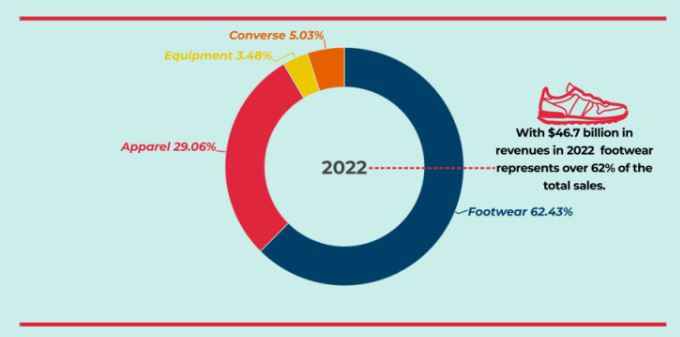A Closer Look at Innovation in Consumer Goods

In a rapidly evolving world driven by technology, the consumer landscape is constantly shifting, demanding products and experiences that are not just functional but exceptional. This quest for novelty and improvement has become a driving force behind the innovation in Consumer Goods.
This innovation is reflected in the findings from the recently published industry report “Innovation Momentum 2023: The Global Top 100”, which leverages LexisNexis® PatentSight® patent data to measure the dynamics of technology development over the past two years and identify fast-paced innovators across industries. In the Consumer Goods sector, the entries are made up almost exclusively of tobacco companies. With the thousands of products that fall under Consumer Goods, it is surprising that the cigarette is a strong candidate for innovation.
Innovation in Consumer Goods: The e-cigarette
Cigarettes have barely changed for centuries, but due to shifts in consumer demands and increasing government regulations, cigarette companies have a strong need for innovation.
Philip Morris International has announced that it is building its future by replacing cigarettes with smoke-free products and the company has invested billions of dollars into the science and research of developing. They employ more than 980 scientists, engineers, and technicians to meet this goal.
A relative newcomer to the industry is Juul Labs. The company states that Juul Labs exists for one clear purpose: to provide adult smokers worldwide with an alternative to combustible cigarettes. The company has a strong innovation portfolio that has the smallest number of patent families but the highest average patent quality.
As the Consumer Goods sector of the Top 100 demonstrates, when facing an existential threat, even the world’s oldest industries can become nimble innovators. There are five tobacco companies in the Global Top 100:
British American Tobacco: a British multinational company that manufactures and sells cigarettes, tobacco, and other nicotine products.
Japan Tobacco: a global tobacco and vaping company focused on innovation and sustainability.
Juul Labs: a U.S based company that was founded with the goal of helping to transition the world’s one billion adult smokers away from combustible cigarettes.
Korea Tobacco & Ginseng: the leading tobacco company in South Korea.
Phillip Morris International: a U.S. based multinational corporation and one of the world’s largest cigarette companies that now has the mission to go smoke-free.

Unveiling the Top Contributors to Global Sustainability Agenda 2030
Be at the forefront of sustainability progress. Download our game-changing IP report to get a comprehensive view of the world’s top contributors to the Global Sustainability Agenda 2030.
Additional companies with strong innovation in Consumer Goods
There are three additional companies identified in the Global Top 100 with high innovation in Consumer Goods:
CJ Corporation: a South Korean international conglomerate holding company operating in food and food services, retail and logistics, entertainment and media, infrastructure, and life sciences.
Nike: an American multinational corporation that designs, markets, and distributes athletic footwear, apparel, and equipment.
P&G: an American based multinational company that produces consumer goods in many categories including baby care, fabric care, grooming, home care, and personal health care.
Nike’s business was once dominated by apparel. Today, footwear represents over 62% of total sales and has become the strongest technology in the company’s portfolio. Footwear contributes to more than 70% of the portfolio strength, an increase of more than 2.5 times over the past decade. Nike’s innovation growth rate will likely go further and faster as it integrates computing technologies into sportswear and accessories.
Analysis of the Consumer Goods companies
The Innovation Momentum report is based on the Patent Asset Index, an industry-trusted measure that uses a scientifically validated method to evaluate the innovative strength of a patent portfolio. The Patent Asset Index represents a measure of the innovative strength of a patent portfolio. This approach of measuring the innovation momentum that companies were able to generate, offers an objective way of identifying companies that have surpassed their competitors in developing a qualitatively superior patent portfolio in the previous two years.
The Patent Asset Index methodology uses:
- Technology Relevance: a measure of the importance of a patent family and the technological invention it protects.
- Market Coverage: measured as the size of the markets in which a patent family is protected, as benchmarked against the world’s largest economy—the United States.
- Competitive Impact: represents the individual strength of a patent family and is obtained by multiplying the Technology Relevance and the Market Coverage of each patent family. It is stated relative to the other patent families in the same field.
For the innovation in Consumer Goods sector the average patent quality is shown in this chart:

Figure 1: Average patent quality (Competitive Impact) versus portfolio size of patent owners in the Consumer Goods industry sector. The bubble size of the patent owners represents the portfolio strength (Patent Asset Index).
And this chart shows the trends of patent owners in the Consumer Goods sector over the last 10 years:

Figure 2: Patent Asset Index trends of patent owners in the Consumer Goods industry sector over the last 10 years.
Using patent analytics to measure innovation strength
The pace of the technological revolution continues to accelerate, providing opportunities for companies of all sizes, as we’ve seen in the innovation in Consumer Goods. The second edition of the Innovation Momentum report reveals that this is an exciting time for the world’s innovators.
Companies can leverage patent analytics to analyze their innovation strength, become more effective at managing their patent portfolio, identify worldwide relevant patents and technology trends, assess the competitive landscape, and find partners and licensing opportunities. With LexisNexis® Intellectual Property Solutions, you benefit from a highly transparent scientific approach to patent data analysis. LexisNexis® PatentSight® patent analytics solution is built on the foundation of ground-breaking validated research. Brought together in the patent value indicator, the Patent Asset Index, this objective approach to assessing patent quality and benchmarking patent portfolios has become a de facto standard in measuring portfolio strength. We’re eager to connect with you and hear about your IP challenges. Contact our experts to help you stay ahead of the innovation curve and future technologies.

Which companies are pioneering the future of science and technology?
Download Innovation Momentum 2023: The Global Top 100 to find out! Using our proprietary patent quality metrics to look at the global patent landscape we list out the Top 100 innovators worldwide. Read the full report to discover which companies are at the forefront of innovation, driving future technologies.

